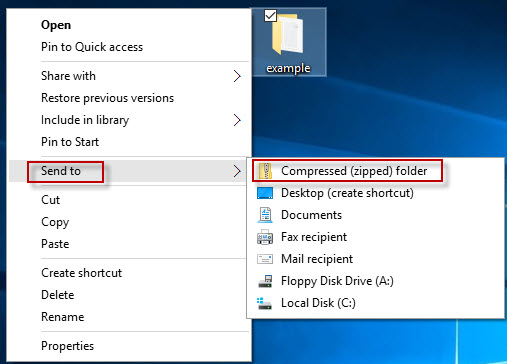

- Uncompressing a zip file on a mac install#
- Uncompressing a zip file on a mac archive#
- Uncompressing a zip file on a mac download#
- Uncompressing a zip file on a mac mac#
Uncompressing a zip file on a mac install#
Install p7zip to unzip *.7z files on Fedora # yum install p7zip Install p7zip to unzip *.7z files on Debian and Ubuntu $ sudo apt-get install p7zip Uncompressing a *.7z 7zip files in Linux using 7za $ 7za e myfiles.7zħ-Zip (A) 9.04 beta Copyright (c) 1999-2009 Igor Pavlov If you don’t have 7za command, install p7zip package as shown below.

If youre looking for a good compression tool for your. 7z format, which it claims provides the best compression of all. It costs nothing, and it supports a wide variety of formats, including. # whereis 7zaħza: /usr/bin/7za /usr/share/man/man1/7za.1.gz 7-Zip, on the other hand, is an open source compression tool for Windows. Verify whether you have 7za command on your system. Once you’ve made the selection, right-click on it to view the context menu. If you’re selecting multiple files, hold the Command key while selecting the files. That’s the low down, the more common compression packages available will typically be covered in one of the above.Question: How do I uncompress a *.7z file ( 7zip file ) in UNIX / Linux ? Can you explain with a simple example?Īnswer: Use 7za command to unzip a 7z file ( 7zip file ) on Unix platform as shown below. To get started, open the Finder app, and locate the files or folders that you want to compress. Zip file not just helps you send multiple files in a single one but also compresses them to make more room for. You can also use a number of different formats for creating a. This article is about making a zip file to store your files and send them easily.
/001_unzip-files-on-android-4178981-5c4a4225c9e77c0001f9e33c.jpg)
To Eject hdiutil eject /Volumes/archive_name/ This simple utility uses the ZIP file archive format by default, making it.
Uncompressing a zip file on a mac mac#
To create hdiutil create -format UDZO -srcfolder folder_to_compress archive_name.dmg Working with the ZIP File Format on Mac All Mac computers come with a built-in file archive utility, Archive Utility.app. This one is macOSnative only – for a GUI interface use /Applications/Utilities/Disk Utility – for command line use: There are 3 main ways to do this on a Mac: double clicking, using your terminal, and using an extension. However, you do have to unzip them to get to the actual information on your computer.
Uncompressing a zip file on a mac download#
To extract gunzip archivename.gz DMG – macOS Only Zip files are compressed files, so they're quicker to download and easier to access. To compress tar -jcvf archive_2 folder_to_compress To extract tar -zxvf archive_ TAR.BZ2 – Cross PlatformĪ variation on TAR GZ but with better compression than both tar.gz and zip. To compress tar -zcvf archive_ folder_to_compress Second up is TAR, an old favorite on Unix/Linux – you add the GZ for the compression – compresses tighter than zip ds store files, use the “-X” option in the command so: zip -r -X archive_name.zip folder_to_compress TAR.GZ – Cross Platform If you want to make a zip without those invisible Mac resource files such as “_MACOSX” or “._Filename” and. To compress zip -r archive_name.zip folder_to_compress ZIP – Cross Platformįirst up is ZIP one of the most commonly used compression techniques used across all platforms Here are some built-in compression applications you can use including zip, tar, gz, bz2, gz and dmg. A compressed file which contains files and folders is generally referred to as an archive. (Note that it may be necessary to unpack some files twice.) If you would rather follow the UNIX-style instructions below you can use the Terminal command-line application, which can be found in your Utilities folder. The default command line application interface in macOS is the Terminal and is stored in /Applications/Utilities.įile and folder compression saves on file size and ensures the contents are captured and delivered or stored as one monolithic file. zip file automatically when you double-click on its icon. Since macOS is based on Unix there are a number of ways to compress files and folders within the filing system using Unix based application code, below are a few options using the Terminal or command line interface (cli).


 0 kommentar(er)
0 kommentar(er)
